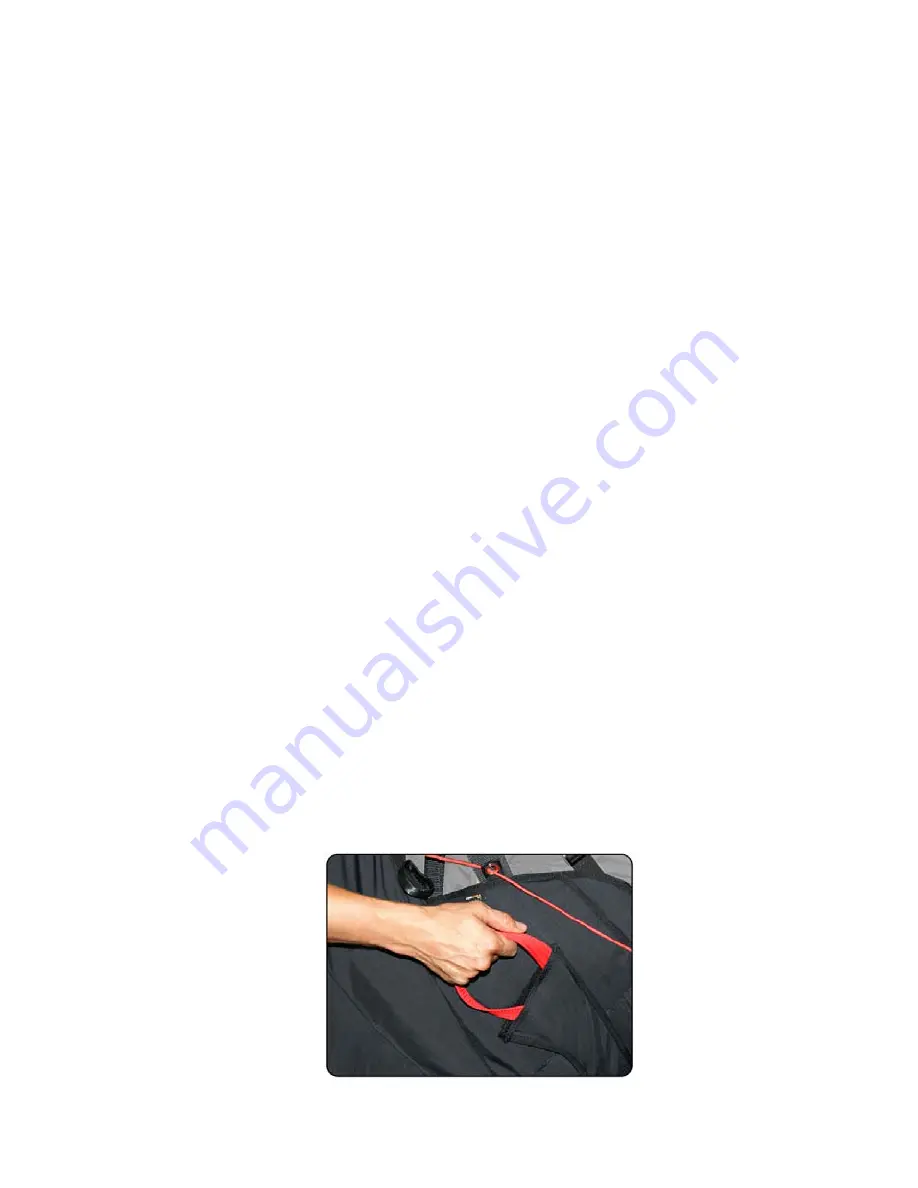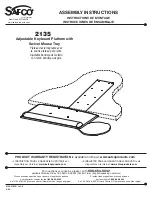
12
Flying with the Manix
Pre-flight checks
For maximum safety, use a complete and consistent system of pre-flight checks and
repeat the same mental sequence every flight.
Check that:
There is no visible damage to the harness or carabineers that could affect its
airworthiness. The rescue parachute container is closed correctly and the pins are
in the right position. The deployment handle is placed on its position.
All buckles, belts, zips are securely fastened. Buckles should click into place as you
close them, and a gentle pull on the fastened buckle verifies this. Secure any zips
after fastening the buckles. Take extra care in snowy or sandy environments.
The paraglider is connected correctly to the harness and both carabineers are
secured by their locking mechanisms.
The speed bar is attached correctly to the glider.
All pockets are closed properly and any loose items are tied down safely.
Check again that you have closed your leg and chest straps before you take off!
Attention! Pay special attention during winter in ice or snow. Always clear any
ice or snow before fastening the buckles.
Take off with the Manix
Check that the leg straps allow proper leg movement by take off. All strap’s adjustments
should allow upright standing position without any pressure on shoulders.
Rescue Deployment
It is vital to periodically feel the position of the rescue handle in normal flight, so that the
action of reaching for the rescue handle is instinctive in an emergency.
In the event of an emergency, the pilot must quickly evaluate his or her height and the
seriousness of the incident. Deploying the rescue when the glider is recoverable may
increase the danger of injury. If you have sufficient height and the glider is in a flat spin,
it is preferable to first try to stop the spin (e.g. full stall), due to the risk of entanglement.
On the other hand, a second’s hesitation in deploying the reserve could prove costly if
there is insufficient height.


































